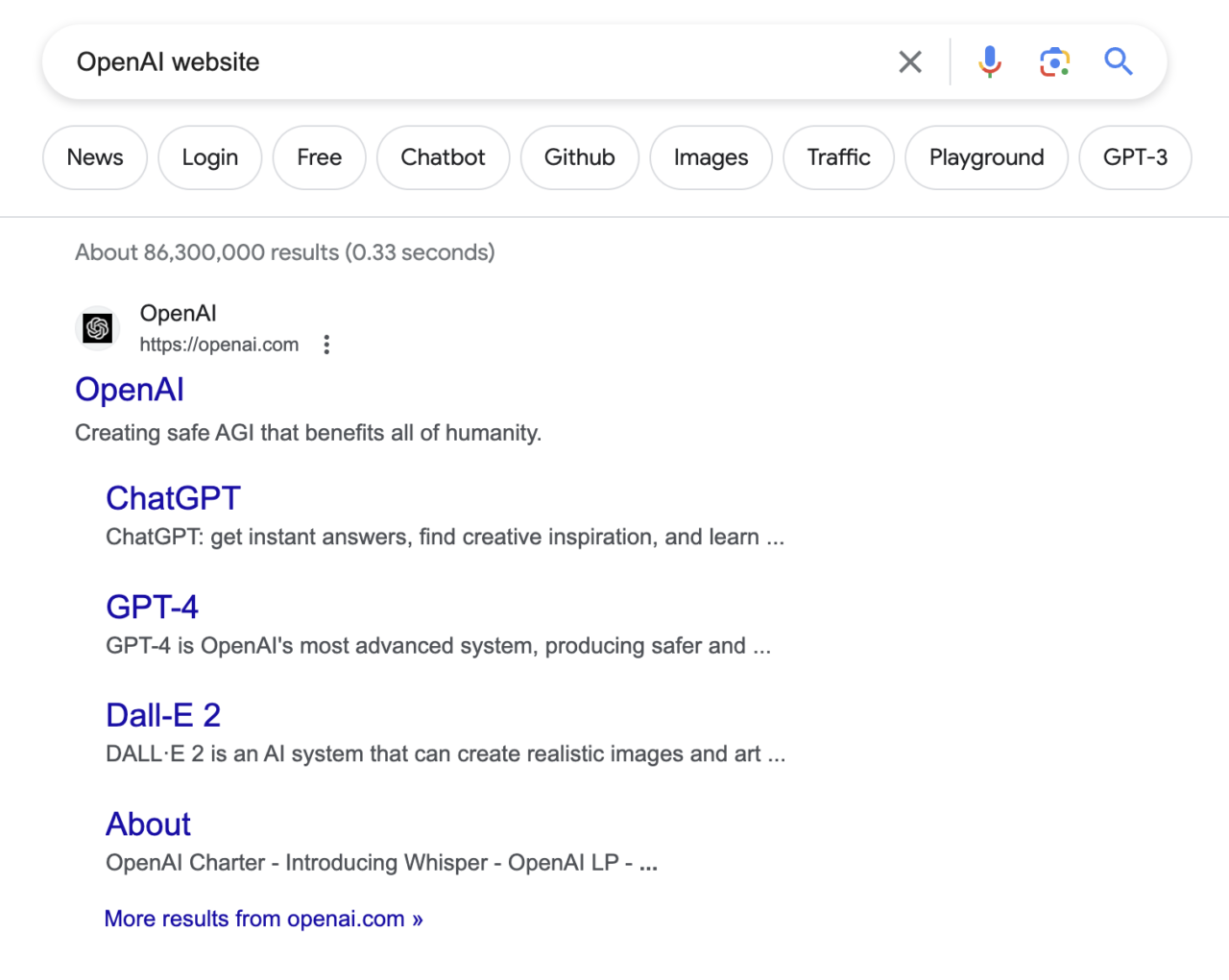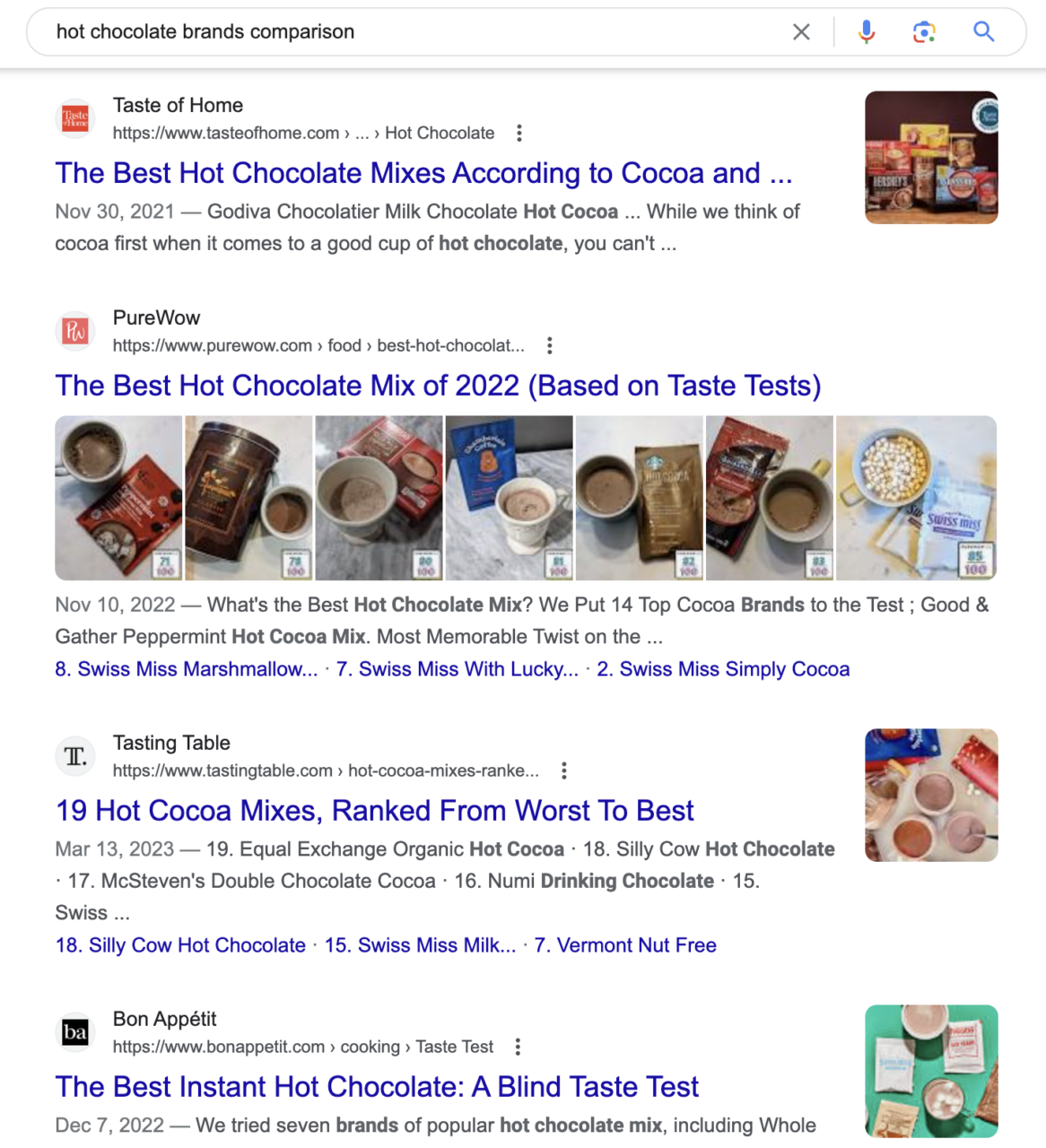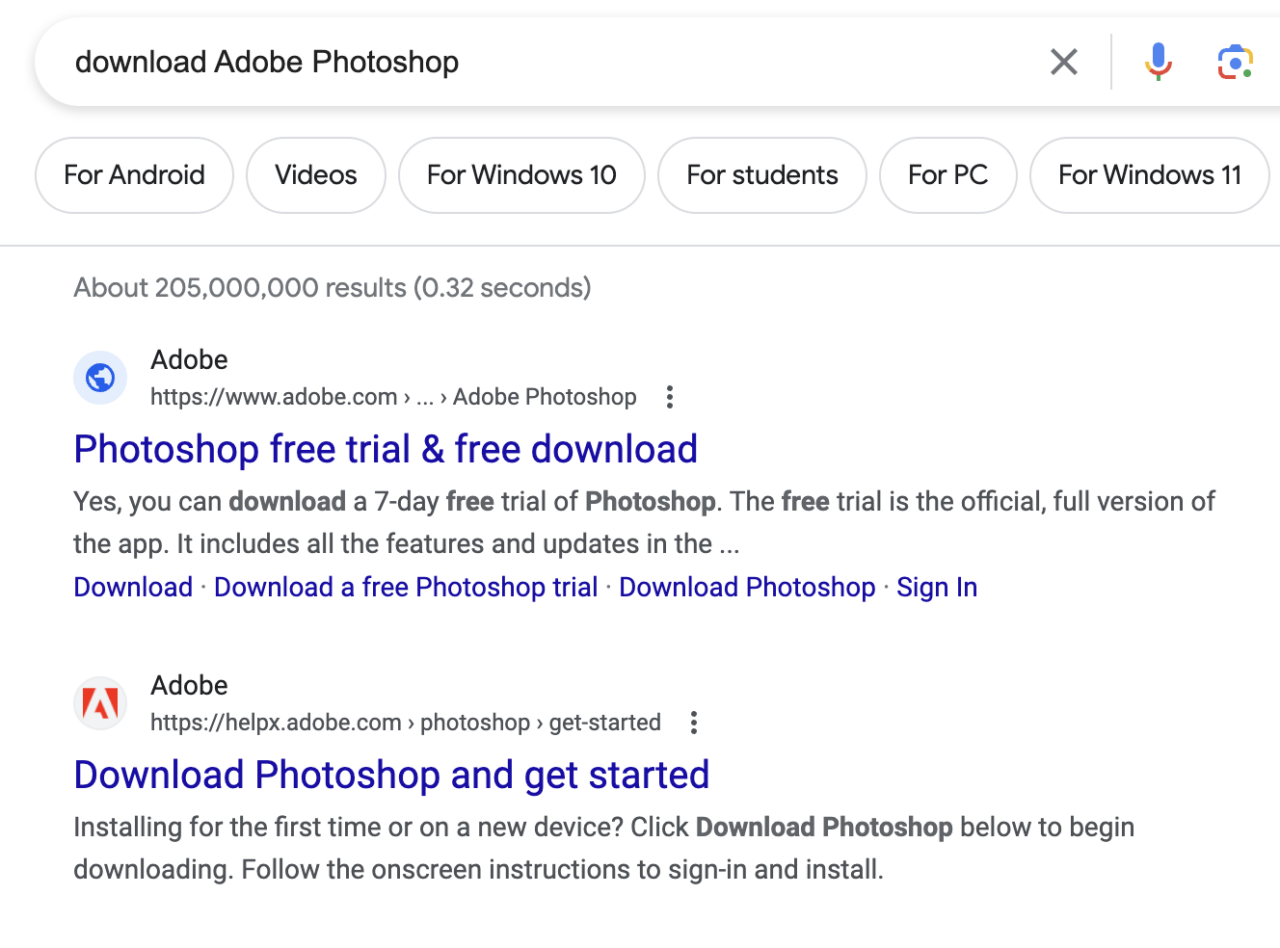Are you struggling to rank higher on search engines and improve your click-through rates (CTR)? The secret to SEO and paid media success lies in understanding search intent optimization. Get this right, and it leads to higher rankings, improved CTRs, and a better user experience.
In this post, we’ll explore the importance of search intent, the relationship between search intent and click-through rates, and how to create content that aligns with users’ needs.
Understanding Search Intent: The Key to SEO and PPC Success
The concept of search intent describes the user’s goal when they type or speak a search query into a search engine. Grasping search intent is crucial for SEO success because it helps create content that is designed to meet users’ requirements and, thus, increases click-through rates (CTRs).
Knowing the four types of search intent allows you to better tailor your content to meet the needs of your target audience and improve your SEO and PPC strategies. The four types of search intent are:
- Informational: Users are looking for information or answers to their questions.
- Navigational: Users are looking for a specific website or webpage.
- Transactional: Users are looking to make a purchase or complete a specific action.
- Commercial: Users are researching products or services before making a decision.
By employing techniques like keyword research, SERPs analysis, and Google autocomplete and related searches, you can analyze search intent and develop content and advertisements that address users’ needs.
Understanding these different intents and leveraging search intent optimization is essential for creating content that aligns with users’ needs and, in turn, ranks higher on search engine results pages organically and via paid ads.
Relationship Between Search Intent and Click-Through Rates (CTR)
The reason that search intent is so important is that there is a strong correlation between search intent and CTR – for obvious reasons. When content satisfies search intent (i.e. you find exactly what you are looking for), it is more likely to be clicked on and engaged with.
Google evaluates relevancy and elevates new content on search results if it meets the search intent. The QDF (Query Deserves Freshness) factor highlights relevant, fresh content and displays the most pertinent search results for users.
Search intent matters because it helps you create content that aligns with users’ needs, leading to higher rankings, CTRs and a better user experience.
For example, location-based search intent (“XYZ near me” or “XYZ in New York”) is crucial for businesses that want to target the areas in which they operate or are located. By focusing on search intent, you can improve the traditional marketing funnel and better understand the nonlinear journey users take from awareness to consideration to purchase:

In fact, a lot of Google’s search quality evaluator guidelines focus on understanding and catering to user intent. Google’s “Needs Met Rating Guideline” offers a scale ranging from Fails to Meet to Fully Meets:

This guideline helps Google determine the intent behind the search in order to provide the most useful results.
For example, typing in “apple” to a search engine is an ambiguous query, and makes it hard for the search engine to provide a definitive result:

By enhancing experience, expertise, authoritativeness, and trustworthiness (E-E-A-T), and implementing search intent optimization, you can create content that better satisfies user intent and improve your click-through rate.
Identifying the Four Types of Search Intent
A user searching for “best hot chocolate recipes” has a specific search intent that differs from someone looking up “buy hot chocolate”. Producing content around the latter query would not fulfill the search intent of someone searching for the best recipes, as these queries have distinct search intents.
In the following subsections, we’ll take a closer look at each type of search intent and discuss how to create content that aligns with these intents. In doing so, you’ll be better equipped to satisfy your users’ needs and improve your overall SEO strategy.
Informational Search Intent
Informational intent refers to searches aimed at gaining knowledge or information on a topic. The keyword intent behind informational search queries is to acquire knowledge, guidance, facts, data, or background details concerning a subject.
Understanding the concept of informational search intent can help in optimizing content for users with this specific goal in mind.
- Purpose: Users with informational intent are seeking knowledge or answers. They have questions or topics they want to learn about, and they are not necessarily looking to make a purchase or take any specific action right away.
- Examples: “What is a DSLR camera?”, “how do smartphones work?”, “best hot chocolate recipes” or “benefits of using tablets over laptops.”
- Content that suits this intent: In-depth articles, tutorials, FAQs, guides, educational videos, and other content that provides detailed information or answers to users’ questions.

Navigational Search Intent
Navigational intent is when a search is conducted with the aim of locating a specific page from a specific source. For example, a user might search for “Facebook login” with the intent of navigating directly to the Facebook login page.
Navigational intent is important for businesses with strong brand recognition or a unique service offering, as optimizing for these searches can help users find your website more easily.
However, optimizing for navigational intent keywords may not yield a high click-through rate. Instead, focus on creating a robust brand identity within a specific topic or niche to improve your website’s visibility and authority for navigational searches.
- Purpose: Users with navigational intent already have a specific destination in mind, typically a website or online resource. They use search engines as a tool to get to that particular site or page.
- Examples: “Facebook login,” “YouTube trending videos,” “OpenAI website,” or “Gmail sign in” or “best hot chocolate in [city name]”.
- Content that suits this intent: Direct website links, branded pages, specific tool or product dashboards, login pages, and other site-specific resources.

Commercial Search Intent
Commercial search intent includes searches for product or service comparisons, reviews and other pre-purchase research. These users are in the research phase and actively seeking information to assist them in making a purchasing decision, though they’re not quite ready to commit yet.
By offering valuable information in an engaging format, you can help potential customers make informed purchasing decisions and improve your overall SEO performance.
- Purpose: Users with commercial intent are often in the research or consideration phase. They want to compare products or services, read reviews, and gather information to make an informed decision later.
- Examples: “best DSLR cameras 2024,” “top smartphones under $500,” “hot chocolate brands comparison,” or “Dyson vs. Shark vacuum”.
- Content that suits this intent: Comparison charts, product reviews, listicles highlighting the top products in a category, infographics and educational content that prepares the user for a potential future purchase.

Transactional Search Intent
Transactional intent is when users search with the intention to purchase or complete an action. Optimizing for transactional intent keywords is more important than focusing on search volume, as it can result in higher conversions. This is often a large informing component of optimizing content for paid ads. It’s where you’ll want to craft landing pages designed around satisfying the searcher’s needs as a result of clicking on a sponsored ad or an organic listing in the SERP.
By doing so, you can better cater to users who are ready to make a purchase or complete an action, improving your overall conversion rate.
- Purpose: Users with transactional intent are ready to take action, often a purchase. They’ve likely done their research and are now looking to buy, sign up, download, or access something specific.
- Examples: “buy iPhone 13 online,” “download Adobe Photoshop,” “order hot chocolate mix,” or “sign up for online yoga classes.”
- Content that suits this intent: Product pages, case studies, checkout pages, subscription or sign-up forms, and any other sales or conversion-focused content.

Note: While both commercial and transactional search intents relate to purchasing decisions, they are distinct in their stages within the buyer’s journey and the specific objectives behind the search:
In essence, while both intents hover around purchasing, commercial intent is more about researching and comparing, while transactional intent is about taking a direct action, like buying or subscribing.
Here’s a quick chart that lays out the difference between all four search intent types to help with your search intent optimization:

Analyzing Search Intent: Tools and Techniques
Analyzing search intent can be done using a variety of tools and techniques, including keyword research tools, SERPs analysis, and Google autocomplete and related searches. By employing these tools and techniques, you can better understand the search intent behind specific keywords and create content that aligns with users’ needs.
Let’s take a closer look at some of these tools and techniques to give you a better understanding of how to analyze search intent and optimize your content for different search intents.
Keyword Research Tools
Keyword research tools like Ahrefs and Semrush can help identify the search intent behind specific keywords:

These tools provide valuable insights into keyword difficulty, search volume, and related phrases, helping you create content that aligns with the intent of your target audience.
By using keyword research tools, you can:
- Gain a deeper understanding of the search intent behind particular keywords
- Tailor your content accordingly
- Achieve higher rankings
- Improve click-through rates (CTR)
- Provide a better user experience
SERPs Analysis
Analyzing search engine results pages (SERPs) can provide insights into the type of content that satisfies search intent for a particular query, as well as recognize similarities among the highest-ranking pages.
This knowledge can then be used to craft content that aligns with the search intent, thereby optimizing CTR for different search intents.
Once you’ve identified your core keyword(s), here’s how to do an effective SERPs analysis:
- Analyze Top-Ranked Pages: For each keyword, look at the first 10 results on search engines like Google. What kind of content are they publishing? Is it long-form content, listicles, videos, infographics, or something else?
- Check Content Format: Notice if there’s a dominant content format. For instance, if video content consistently ranks high for a specific query, it’s a sign that users prefer video for that topic.
- Examine On-Page SEO Elements: Look at title tags, meta descriptions, URL structures, and H1 tags of top-ranking pages. These can provide insights into keyword optimization strategies.
- Identify Content Gaps: What are top-ranking pages missing? Can you provide a more comprehensive guide, a fresher perspective, or a unique angle that’s not currently covered? If so, fill that content gap.
- Adapt and Create: Based on your findings, craft content that aligns with the identified search intent. Ensure that it’s both user-centric and optimized for search engines.
- Monitor CTRs: After publishing your content, monitor its CTR in the SERPs. A higher CTR indicates that your content effectively matches the user’s search intent. If your CTR is lower than expected, you’ll need to optimize your content to better align with user expectations.
By tailoring your content to closely match what users are seeking, and what search engines deem high-quality, you’ll likely achieve better rankings.
Google Autocomplete and Related Searches
Google autocomplete is a feature embedded in Google Search that suggests search predictions based on popular and recent searches.
Alongside this, at the bottom of the SERPs, Google displays related search terms that users often click on for similar queries. These tools can be instrumental in uncovering content ideas that genuinely resonate with search intent.
It’s pretty easy to use Google autocomplete and Related Searches:
- Start by typing broad keywords or phrases related to your niche or topic into Google’s search bar.
- Before pressing “Enter,” note the dropdown suggestions provided by Google. These are real-world queries that people are frequently searching for:

- Click on some of the autocomplete suggestions to delve deeper into specific sub-topics or angles that you might not have considered.
- After viewing the search results for your initial query, scroll to the bottom of the page. Here, you’ll find “related searches” that can provide additional content angles or sub-topics:

- Create a list or spreadsheet of the suggestions and related searches. Organize them into categories or potential content themes.
- For each content idea, do a quick SERPs analysis to gauge competition. Determine if you can provide a unique perspective or higher quality content than what currently ranks.
- Develop content around the gathered search terms, ensuring it’s tailored to meet or exceed user expectations based on the search intent.
- As always, track the performance of your content in terms of rankings, CTR, and engagement. If a piece is underperforming, consider optimizing or updating it based on feedback and analytics.
Optimizing Your CTR for Different Search Intents
The best way to optimize your CTR for different search intents is to tailor your title, meta description, and structured data to the specific intent of the query. Let’s take a look at examples of title, meta description and structured data for each of the four search intent types.
Informational Search Intent
Query: “How do solar panels work?”
- Title: “Understanding Solar Panels: How They Work and Generate Electricity”
- Meta Description: “Dive deep into the science of solar panels. Learn how they capture sunlight and convert it into usable electricity for homes and businesses.”
- Structured Data (FAQ Schema):

Navigational Search Intent
Query: “OpenAI blog”
- Title: “OpenAI Blog: Latest Research, Updates, and News”
- Meta Description: “Official OpenAI Blog: Explore the forefront of AI research, news and insights directly from the experts at OpenAI.”
- Structured Data (Breadcrumb Schema):

Commercial Search Intent
Query: “Best smartphones 2024 comparison”
- Title: “Top Smartphones of 2024: Comprehensive Comparison & Review”
- Meta Description: “Uncover the best smartphones in 2024. Dive into our side-by-side comparison of features, camera quality, battery life, and more.”
- Structured Data (Review Schema):

Transactional Search Intent
Query: “Buy ergonomic office chair”
- Title: “Ergonomic Office Chairs: Premium Comfort for Sale”
- Meta Description: “Explore our selection of top-rated ergonomic office chairs. Experience unmatched comfort and support for long work hours. Free shipping available!”
- Structured Data (Product Schema):

Last Word on Search Intent and CTR
Understanding user intent and implementing search intent optimization is essential for SEO success. In identifying the different types of search intent, analyzing search intent using various tools and techniques, and crafting content that aligns with users’ needs, you can achieve higher rankings, improved CTR, and a better user experience.
Start optimizing your content to optimize for search intent today and watch your SEO performance soar.
If you’re ready to level up your content for better CTR, Single Grain’s content marketing experts can help!👇
Search Intent FAQs
-
What is search intent optimization?
Search intent optimization is the process of providing the best possible answer to a customer’s query in the most relevant and comprehensive way, thereby ensuring customer satisfaction and gaining their loyalty.
This process is essential for businesses to stay competitive in the digital age, as customers expect to find the answers they need quickly and easily. It is also important for businesses to ensure that their content is optimized for search engines, as this will help them to rank higher.
-
What are the 4 types of SEO intent?
The four main types of search intent are navigational, informational, commercial and transactional. These categories provide an effective way to understand what people are searching for when they use search engines.
Search intent is an important concept for copywriters to understand. It helps them craft content that is tailored to the needs of their target audience. By understanding the different types of search, we can understand the different types of search.
-
What are the 3 C's of search intent?
The 3 C’s of search intent are content type, content format, and content angle. This helps marketers optimize their content and better understand user intent for specific keywords.
-
Why is understanding search intent important for SEO?
Understanding search intent is essential for SEO success, as it helps craft content that satisfies users’ needs, improves CTR and contributes to better rankings.
It is important to understand what users are looking for when they search for a particular query, and to create content that meets their needs. This can be done by researching the query and understanding the context in which it is used.
-
How can I analyze search intent?
Analyzing search intent can be done through tools such as keyword research, SERP analysis, and Google autocomplete and related searches. This will provide insights into the user’s query and help inform your content decisions.
Related Video
For more insights and lessons about marketing, check out our Marketing School podcast on YouTube.
Additional content contributed by Sam Pak.






